“HE HAS MADE HER…CIVILLY DEAD” (1848)
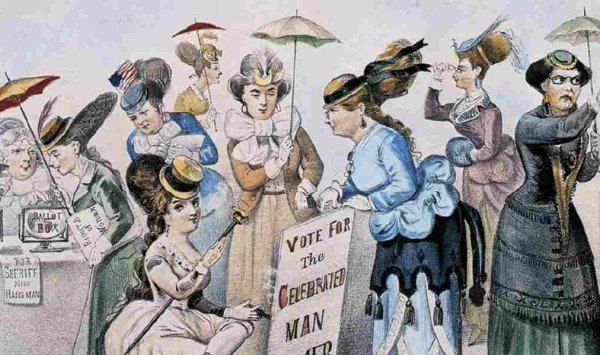
******************************************************************************************************************************** Brownstone Detectives investigates the history of our clients’ homes. The story you are about to read was composed from research conducted in the course of one of those investigations. Do you know the history of YOUR house? ******************************************************************************************************************************** In July of 1848, Elizabeth Cady Stanton, an early organizer for women’s suffrage movements in the United States, changed the course of property rights for married women forever when she uttered a stunning declaration about their legal mortality. They were, she noted dryly, “civilly dead.” While Stanton was not attacking the institution of marriage itself, she was confronting American society with a challenge to the institution’s precepts on women’s capacities to control their very destinies. Most importantly, she believed the forfeiture of married women’s autonomy to be a mistake. As things then stood, women, as soon as they tied the proverbial knot, were in positions of almost total dependency on their husbands. The legal status of married women at the time, referred to as coverture, was famously placed into stark terms by the English jurist William Blackstone in his 18th century legal classic, Commentaries on English Law: “By marriage, the husband and wife are one person in the law: that is, the very being or legal existence of the woman is suspended during the marriage, or at least is incorporated and consolidated into that of the husband: under whose wing, protection, and cover, she performs every thing.” As a result of the suspended existence of married women, they could not own […]
SUNSETTING ON A BED-STUY BOULEVARD (1909)
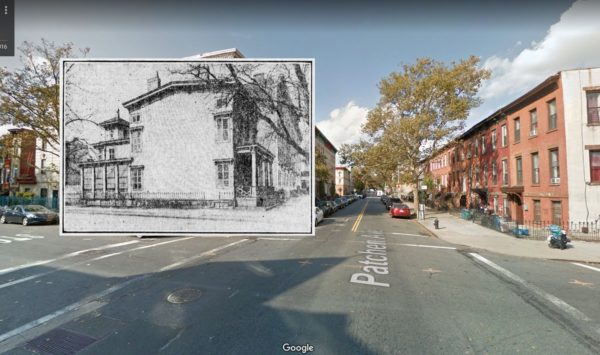
******************************************************************************************************************************** Brownstone Detectives investigates the history of our clients’ homes. The story you are about to read was composed from research conducted in the course of one of those investigations. Do you know the history of YOUR house? ********************************************************************************************************************************In 1909, a landmark was about to be destroyed. It was quite common, though, at the time for owners to tear down the antiquated wood-frame mansions that dotted Brooklyn’s landscape. Since the new brownstone houses had become all the rage in the 1880s, these tinder “firetraps” had become redundant, difficult to sell, and simply unstylish to live in. By the late 19th century, they were being sold, in many cases, for the value of their land as building lots. And with the demise of these historical artifacts, went some truly beautiful examples of mid-19th century architecture, few of which remain with us to this day. THE DE MILLE HOUSE The De Mille house was built around the middle of the 19th century for the family of that name, “and it has been a landmark in that region since the days when it was surrounded by open fields.” Yes, even Bedford-Stuyvesant – today chockablock with brownstone and masonry homes – was once – even before the advent of wood-frame homes – forested land alongside open virgin fields. As a matter of fact, the corner of Quincy and Patchen, in the 1850s, was little more than hills, dales, dirt lanes, and the vague promise of a future suburban city. “Broadway, which is nearby, was […]
DRAPED IN OLD GLORY AT 159 ADELPHI (1905)

******************************************************************************************************************************** Brownstone Detectives investigates the history of our clients’ homes. The story you are about to read was composed from research conducted in the course of one of those investigations. Do you know the history of YOUR house? ******************************************************************************************************************************** “Few men have lived lives of greater adventure and achievement than John Quevedo, whose body, in a flag-draped coffin, lies at his home, No. 159 Adelphi street, Brooklyn.” So read an article in the Duluth Evening News of 9 February 1905. “Fifty years in the United States Navy, a member of the crew that, under Commodore Perry, opened Japan to Western civilization, one of Farragut’s men in the big sea lighting of the Civil War and, greatest of all, one of the gallant crew that under Schley dared the perils of the frozen North and rescued Greely from his starvation camp at Cape Sabine. Such is the record of John Quevedo. “A Spaniard born, he had been in the American Navy since he was 16. His father was a bluejacket before him, and his son fought under Dewey at Manila, and is now instructor of gunnery at the Brooklyn navy yard. “For the past decade John Quevedo has been the storekeeper at the navy yard ever since a shell fell on his feel on board the Boston and incapacitated him from further active service. Two weeks ago the veteran was attacked by paralysis and gradually sank into death.” A GREELY RESCUE HERO “Of all his adventures, he spoke most proudly of […]
JACK THE RIPPER IN BROOKLYN HEIGHTS (1889)
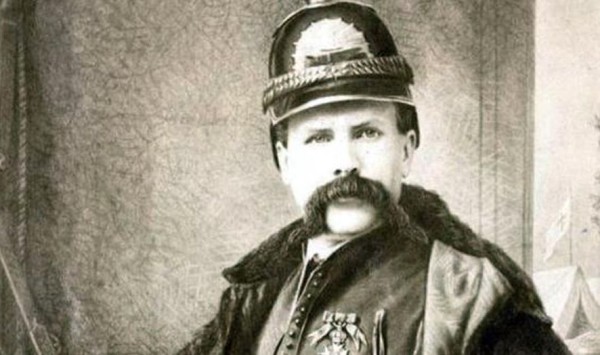
******************************************************************************************************************************** Brownstone Detectives investigates the history of our clients’ homes. The story you are about to read was composed from research conducted in the course of one of those investigations. Do you know the history of YOUR house? ******************************************************************************************************************************** The residents of Brooklyn Heights had always seemed to have much more to fear from one another than from the butcheresque stylings of London’s Jack The Ripper. His fiendish work had been performed with the great learnedness of a doctor, but, comfortingly, it had been executed all the way across the Atlantic in the East End of London. It was likely because of this distance that Brooklynites felt free to regale in the stories of the Ripper’s murders and to wonder at the identity of the modern-day butcher. On 18 January in 1889, however, all of that may have changed, when a man using the “common, every day” name Smith stepped up to a Brooklyn Heights boarding house – with his bag and great trunks en tow – and quietly checked himself in for a long stay. TWOMBLEY, THE INDIAN HERB DOCTOR The former “Indian herb doctor,” who had, through “judicious and extensive advertising, managed to make a handsome income,” engaged Mrs. Lamb’s rooms, where he also took his meals. Dr. Francis Twombley, also known as Tumblety, in his former life in the U.S. – for he was born and raised in the States – had, in the early 1860s, had an office and laboratory on Fulton Street, near Nassau. (According […]
“TERMINATION OF OUR DAYS OF GRACE…” (1864)
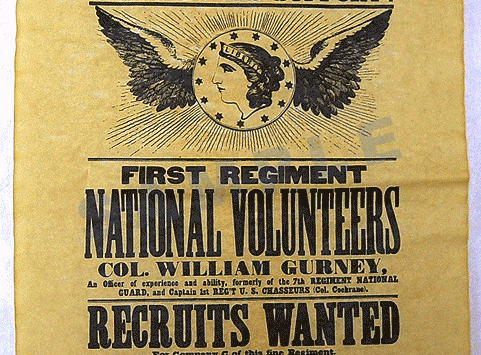
******************************************************************************************************************************** Brownstone Detectives investigates the history of our clients’ homes. The story you are about to read was composed from research conducted in the course of one of those investigations. Do you know the history of YOUR house? ******************************************************************************************************************************** More than 150 years ago today, the Brooklyn Daily Eagle was waxing melancholy and composing prose over the “approaching draft,” wondering aloud whether the government would enforce it, thereby sending thousands of Brooklynites into the military. “As the days roll by, nearer and nearer approaches the termination of our days of grace, the dreaded 5th of September, when the wheels at the Provost Marshal’s offices will make their fatal rounds and thousands of trembling citizens will be transformed into soldiers. “As a matter of course, an event so momentous to the able-bodied and slim-pursed portion of the population, which is, after all, the largest portion of our people, forms the great stable of conversation, “The burden of their thoughts by day And dreams by night, “and even the momentous issues involved in the the Chicago Convention,” the Daily Eagle continued, “‘pale their lights’ in the shadow of that simple wheel, whose dark recesses are pregnant with the fate of so many thousands of families in our midst.” Some things never change… Follow @BrownstoneDetec Share ———————————————————————————————————————– The Brownstone Detectives Brownstone Detectives is an historic property research agency. Our mission is to document and save the histories of our clients’ homes. From our research, we produce our celebrated House History Books and House […]
THE SECOND HUMILIATION OF WARREN (1960)
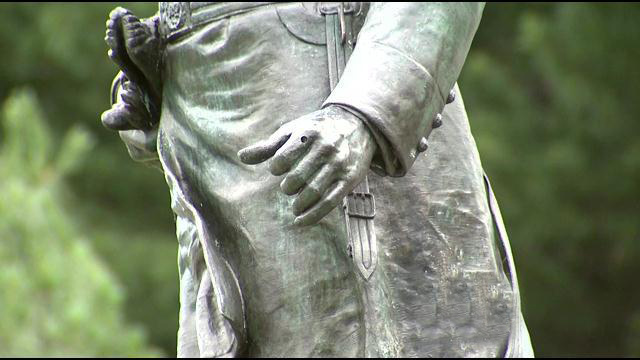
A number of New York City Parks Department statues are having their stolen swords replaced reported a DNAInfo story. The statues, most of which have had their their swords stolen (bayonets, and glasses, in some instances) during times of high crime, are now deemed worthy of replicas being cast. The Parks Department worries less now about the replicas being stolen themselves. I’ve often noticed one such statue in particular – the Kemble Warren statue at the Grand Army Plaza. First of all, why was it there? What had Warren, an engineer, done that could have been so critical to the war effort? Had he been a critical part of the attack at any actual battle? I figured that, as an engineer, he had – more likely – prepared a defense. But was that enough to receive a statue? KEMBLE WARREN – A HUMILIATION Gouverneur Kemble Warren, the engineer for whom the statue at the Grand Army Plaza had been cast and dedicated, had been known for his heroism at Gettysburg. By the time that General Philip Sheridan had begun his “burning of the Shenandoah Valley,” though, Warren had been castigated by, what Sheridan referred to as, a critical slowness in arriving to a certain battle. Because of this, Warren had been relived of duty by the general (an action supported by General Grant, at the time) and assigned to another, less critical, theater of battle. The humiliation of the relief of command, though, had already had its effect. After some […]
A BED-STUY BUILDER “GOES ASTRAY” (1891)
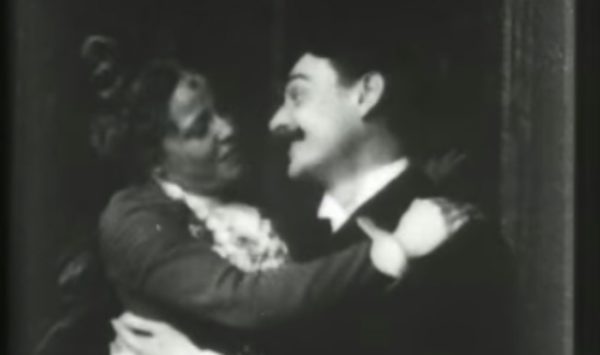
******************************************************************************************************************************** Brownstone Detectives investigates the history of our clients’ homes. The story you are about to read was composed from research conducted in the course of one of those investigations. Do you know the history of YOUR house? ******************************************************************************************************************************** One of the more colorful builders in the Bedford-Stuyvesant area before the turn of the century was Ransom F. Clayton. Clayton and his wife Hannah purchased entire blocks for development and became rich reselling land and building brownstones for occupancy. Clayton, approximately 60 years of age in the early 1890s, was the founder of the building firm Ransom F. Clayton & Son. In addition to being a builder, he had also been a jack-of-all-trades – a Civil War veteran, an inventor, a nominee for City Controller with the Prohibition Party, and a director and the treasurer of the Ocean Palace Elevated Railroad. In 1891, though, he could add to that list the title of “scoundrel.” For, in that year, having some years previous turned over the reins of his building firm to his son, Clayton was now being given the opportunity to lose the property in a highly publicized divorce scandal. Several newspapers of the time hyperventilated over the steamy details of the case, from the “plain black gown” that Mrs. Clayton wore to court, to the description of “the other woman,” Mrs. Margaret F. Oakley, who was “tall,” “finely formed,” and “richly attired,” and further to, finally, how the crowd in the packed court room erupted in applause when the […]
The Burning of Mayor Wood’s Home (1855)
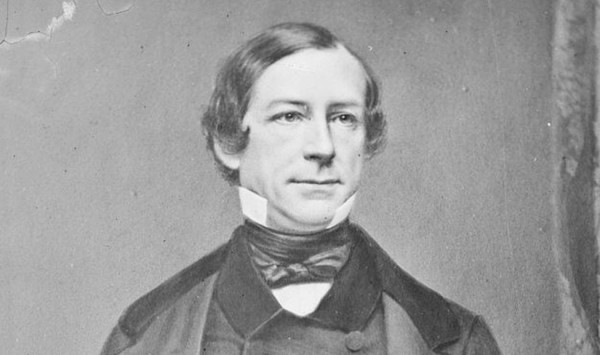
One of the buildings involved in yesterday’s horrific conflagration in the East Village had at one time been the residence of a New York City mayor infamous for his suggestion during the Civil War that New York City secede from the Union. According to an 1855 New York Times news-story, that mayor, Fernando Wood, lived at No. 121 Second Avenue (today, No. 123). Apparently, this 4-story and basement single family residence would be his home for many years. The fiercely political 2-term mayor was known for his leadership of Tammany Hall and for a system of massive patronage in city government that would eventually lead to emergence of Boss Tweed. Wood’s initial image, though, was one of anti-corruption, as, while living at his Second Avenue home, he was hailed for rooting out the extensive corruption that was rife within the New York Municipal Police Department at the time. According to the East Village/Lower East Side Historic District Designation Report, 123 Second Avenue was constructed in 1834. It subsequently underwent numerous alterations over the years, one of which likely occurred around 1911 when Second Avenue was famously widened – it was in that action that the building’s stoop and yard were removed. The numbering, also, was altered at some point. The current No. 121 Second Avenue was previously No. 119 Second Avenue, and today’s No. 123 Second Avenue (Wood’s residence) was then No. 121 Second Avenue. Follow @BrownstoneDetec ———————————————————————————————————————– The Brownstone Detectives The story you just read was composed from historical […]
Observing Memorial Day
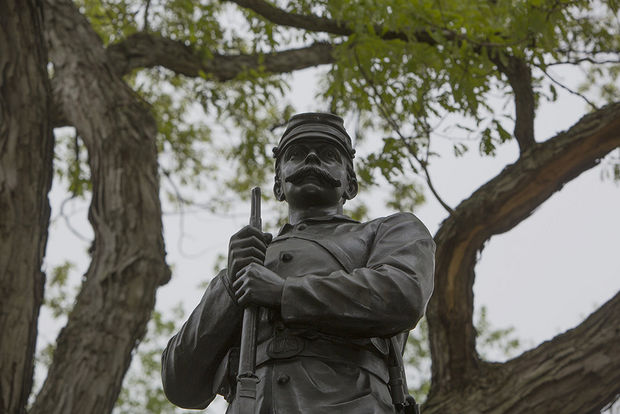
“Then the three waves in flashed advance Surged, but were met, and back they set: Pride was repelled by sterner pride, And Right is a strong-hold yet.” — Herman Melville This weekend, remember those who have gone before us and have made the ultimate sacrifice. See you all on Tuesday. Brian